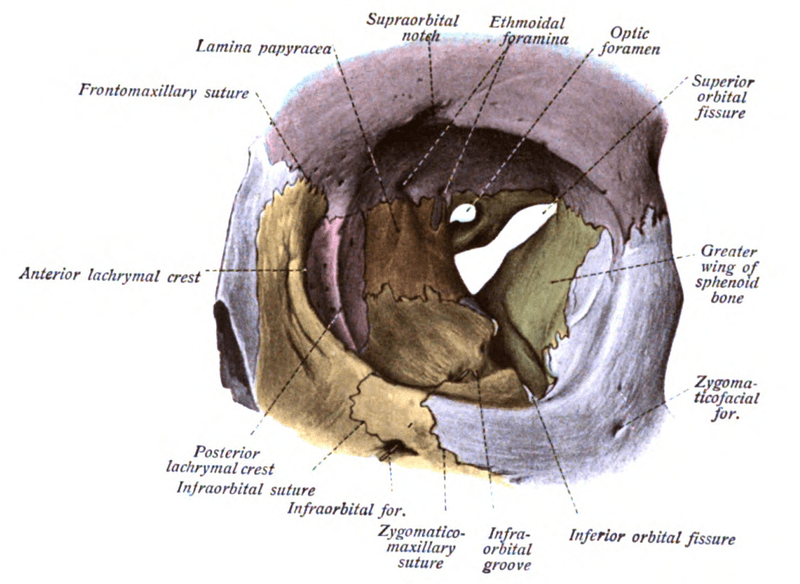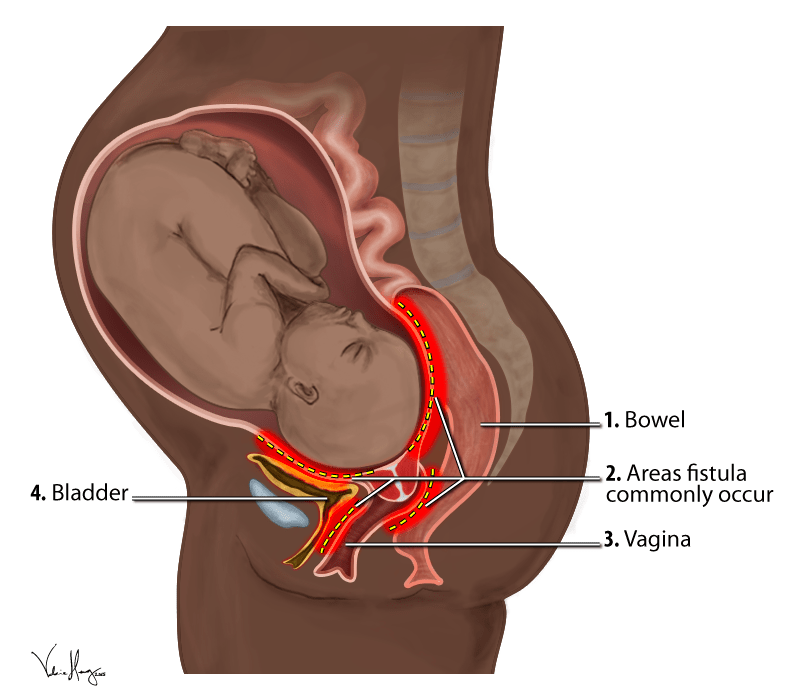Key Difference – Fissure vs Fistula
Fissure and Fistula are two terms used in medicine that show some difference between them. A fissure (Latin fissure) is a deep furrow or an elongated cleft present in various parts of the body. A fistula is an abnormal connection between two hollow or tubular organs. The key difference between Fissure and Fistula is that the Fissure can be present as a part of a normal body structure or acquired later causing a disease condition (e.g. anal fissure) while a fistula is an abnormal or surgically made passage between a hollow organ and the body surface, or between two hollow organs (e.g. Intestinal fistulas opening to outside or to internal organs).
What is Fissure?
Fissures can be naturally occurring or pathological. Natural fissures do not have any clinical significance. However, pathological fissures are clinically significant and lead to symptoms. A good example for pathological fissures is anal fissure, which is a tear of the anal skin at the verge of the anus. Anal fissures occur due to the passage of hard stool and straining. They are usually very painful and lead to a vicious cycle of pain, constipation and re-damage of the anal skin. Anal fissures are treated by stool softeners combined with painkillers for local application. Sometimes anal fissures become chronic and need surgical excision.
Examples of some naturally occurring fissures.
- Clevenger’s fissure: Present on the inferior temporal lobe
- Collateral fissure: Present on the inferior surface of the brain.
- Fissure of Sylvius: Separates temporal lobe from the frontal and parietal lobes of the brain
- Medial longitudinal fissure: Divides the cerebrum into right and left hemispheres.
- Broca’s fissure: Found in the third left frontal fold of the brain.
- Calcarin’s fissure: extending from the occipital lobe to the occipital fissure.
- Central sulcus: Separates the frontal lobe from the parietal lobe.
- Auricular fissure: Present on the temporal bone
- Sphenoidal fissure: separates the wings from the body of the sphenoid bone.
- Superior orbital fissure
- Pterygomaxillary fissure
- Petrotympanic fissure

- Longitudinal fissure: Present on the lower surface of the liver.
- Portal fissure: Present on the under-surface of the liver.
What is Fistula?
In medicine, a fistula refers to an abnormal connection between two hollow or tubular organs such as blood vessels or intestines. Fistulas are usually caused as a complication of injury or post surgical complication. Rarely, fistulas can also result from an infection such as tuberculosis or chronic autoimmune conditions. Fistulas are generally a disease condition. However, fistulas may be surgically created as a treatment for a disease condition. Creation of fistula between portal and systemic blood vessels during portal hypertension to relive pressure is a good example for this.
Fistulas can be treated surgically by removing the complete fistulous track connecting two epithelialized surfaces. Few examples are as below.
- Entero-cutaneous fistula: Abnormal connection between the bowel and the skin
- Entero-vesicle fistula: Abnormal connection between the bowel and the urinary bladder.
- Recto-vaginal fistula: Abnormal connection between the rectum and the vagina.

Obstetric Fistula
What is the difference between Fissure and Fistula?
Definition of Fissure and Fistula
Fissure: A fissure is a deep furrow or an elongated cleft present in various parts of the body.
Fistula: A fistula is an abnormal connection between two hollow or tubular organs.
Characteristics of Fissure and Fistula
Cause / Occurrence
Fissure: Most of the fissures found in the body are natural.
Fistula: Fistulas are almost always pathological and are usually caused as a complication of injury or post-surgical complication, and rarely, result from an infection.
Pathological Basis
Fissure: Fissures occur on the surface of an organ.
Fistula: Fistulas connect two organs by a hollow tube-like track.
Treatment Purposes
Fistula: Fistulas are used for treatment purposes.
Fissure: Fissures are not used for treatment purpose.
In patients with portal hypertension, portacaval fistula is created surgically which produces a connection between the hepatic portal vein and the inferior vena cava across. This spares the portal venous system from high pressure which can cause esophageal varices, caput medusae, and hemorrhoids.
Image Courtesy: “Obstetric Fistula Locations Diagram” by VHenryArt – Own work. (CC BY-SA 4).0 via Wikimedia Commons “Sobo 1909 95” by Dr. Johannes Sobotta – Sobotta’s Atlas and Text-book of Human Anatomy 1909. (Public Domain) via Wikimedia CommonsncG1vNJzZmivp6x7pbXFn5yrnZ6YsqOx07CcnqZemLyue8OinZ%2Bdopq7pLGMm5ytr5Wau26yyKyqrqqVYq6vsIyvqmaemajBtrjAaA%3D%3D